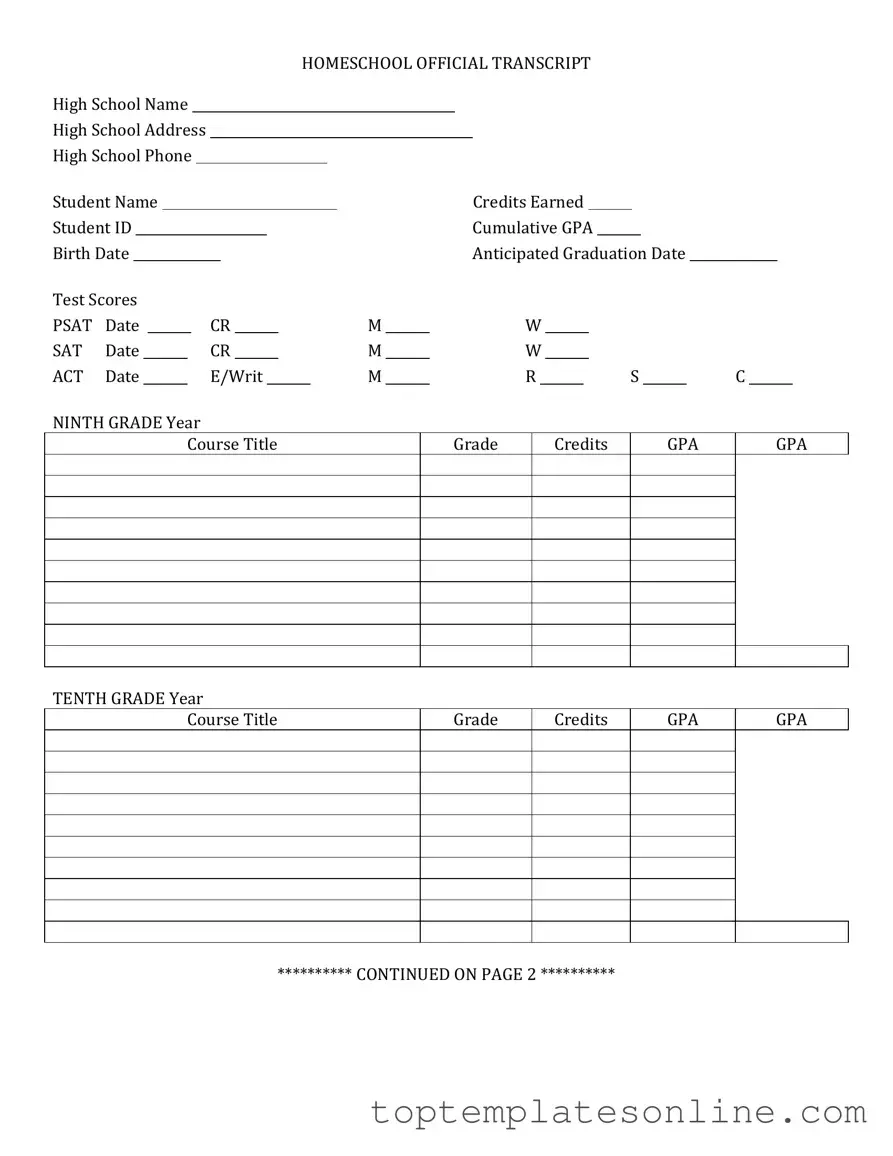When navigating the path to higher education or employment, a high school transcript plays a crucial role in showcasing a student's academic journey. This important document provides a comprehensive record of a student's coursework, grades, and overall performance throughout their high school years. It typically includes details such as the subjects taken, credit hours earned, and any honors or advanced placement courses completed. Additionally, transcripts often reflect a student's grade point average (GPA) and may include standardized test scores, which further highlight academic achievements. For those seeking college admissions or job opportunities, understanding the significance of the high school transcript form is essential. It not only serves as a formal representation of a student's educational background but also helps institutions and employers assess qualifications and readiness for future challenges. Careful attention to the accuracy and completeness of this document can greatly influence a student's prospects, making it imperative to approach its preparation with diligence and care.
